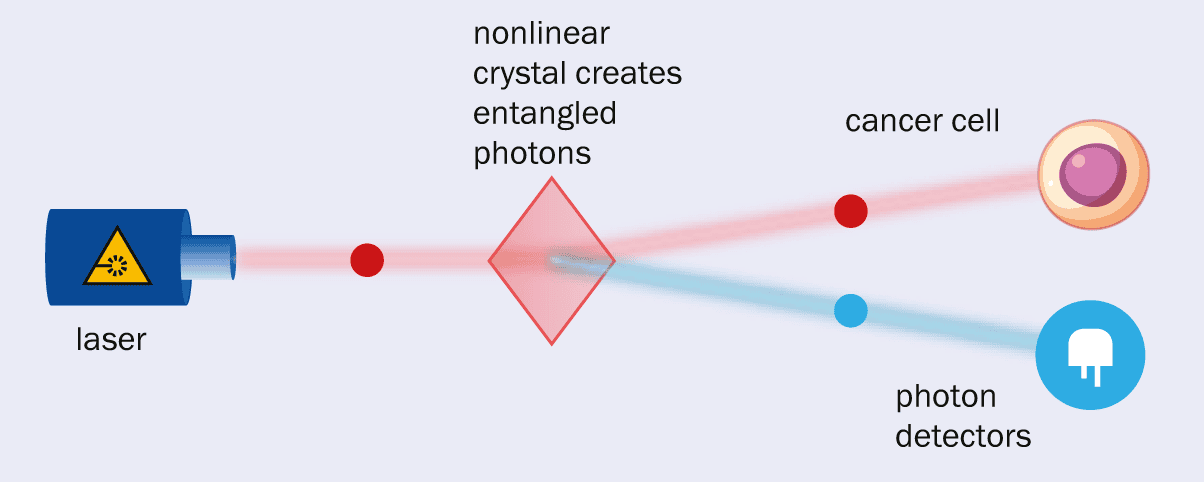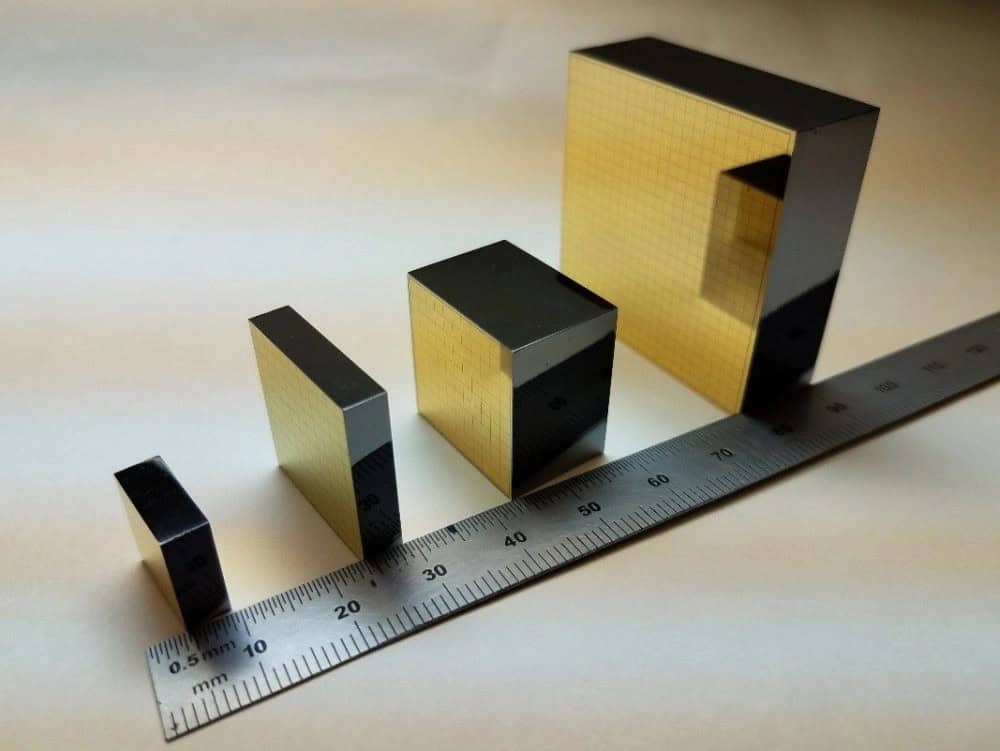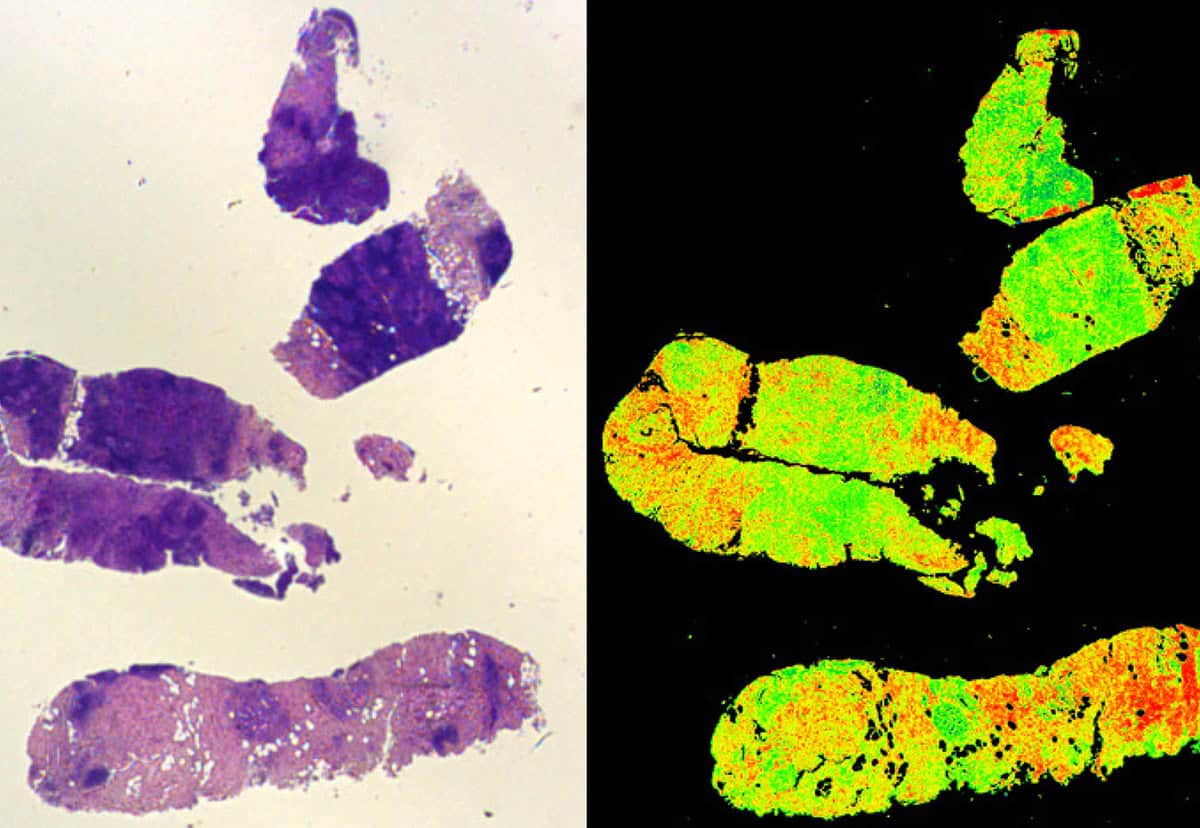As the world celebrates the 2025 International Year of Quantum Science and Technology, it’s natural that we should focus on the exciting applications of quantum physics in computing, communication and cryptography. But quantum physics is also set to have a huge impact on medicine and healthcare. Quantum sensors, in particular, can help us to study the human body and improve medical diagnosis – in fact, several systems are close to being commercialized.
Quantum computers, meanwhile, could one day help us to discover new drugs by providing representations of atomic structures with greater accuracy and by speeding up calculations to identify potential drug reactions. But what other technologies and projects are out there? How can we forge new applications of quantum physics in healthcare and how can we help discover new potential use cases for the technology?
Those are the some of the questions tackled in a recent report, on which this Physics World article is based, published by Innovate UK in October 2024. Entitled Quantum for Life, the report aims to kickstart new collaborations by raising awareness of what quantum physics can do for the healthcare sector. While the report says quite a bit about quantum computing and quantum networking, this article will focus on quantum sensors, which are closer to being deployed.
Sense about sensors
The importance of quantum science to healthcare isn’t new. In fact, when a group of academics and government representatives gathered at Chicheley Hall back in 2013 to hatch plans for the UK’s National Quantum Technologies Programme, healthcare was one of the main applications they identified. The resulting £1bn programme, which co-ordinated the UK’s quantum-research efforts, was recently renewed for another decade and – once again – healthcare is a key part of the remit.
As it happens, most major hospitals already use quantum sensors in the form of magnetic resonance imaging (MRI) machines. Pioneered in the 1970s, these devices manipulate the quantum spin states of hydrogen atoms using magnetic fields and radio waves. By measuring how long those states take to relax, MRI can image soft tissues, such as the brain, and is now a vital part of the modern medicine toolkit.
While an MRI machine measures the quantum properties of atoms, the sensor itself is classical, essentially consisting of electromagnetic coils that detect the magnetic flux produced when atomic spins change direction. More recently, though, we’ve seen a new generation of nanoscale quantum sensors that are sensitive enough to detect magnetic fields emitted by a target biological system. Others, meanwhile, consist of just a single atom and can monitor small changes in the environment.
There are lots of different quantum-based companies and institutions working in the healthcare sector.
As the Quantum for Life report shows, there are lots of different quantum-based companies and institutions working in the healthcare sector. There are also many promising types of quantum sensors, which use photons, electrons or spin defects within a material, typically diamond. But ultimately what matters is what quantum sensors can achieve in a medical environment.
Quantum diagnosis
While compiling the report, it became clear that quantum-sensor technologies for healthcare come in five broad categories. The first is what the report labels “lab diagnostics”, in which trained staff use quantum sensors to observe what is going on inside the human body. By monitoring everything from our internal temperature to the composition of cells, the sensors can help to identify diseases such as cancer.
Currently, the only way to definitively diagnose cancer is to take a sample of cells – a biopsy – and examine them under a microscope in a laboratory. Biopsies are often done with visual light but that can damage a sample, making diagnosis tricky. Another option is to use infrared radiation. By monitoring the specific wavelengths the cells absorb, the compounds in a sample can be identified, allowing molecular changes linked with cancer to be tracked.
Unfortunately, it can be hard to differentiate these signals from background noise. What’s more, infrared cameras are much more expensive than those operating in the visible region. One possible solution is being explored by Digistain, a company that was spun out of Imperial College, London, in 2019. It is developing a product called EntangleCam that uses two entangled photons – one infrared and one visible (figure 1).
1 Entangled thoughts

a One way in which quantum physics is benefiting healthcare is through entangled photons created by passing laser light through a nonlinear crystal (left). Each laser photon gets converted into two lower-energy photons – one visible, one infrared – in a process called spontaneous parametric down conversion. In technology pioneered by the UK company Digistain, the infrared photon can be sent through a sample, with the visible photon picked up by a detector. As the photons are entangled, the visible photon gives information about the infrared photon and the presence of, say, cancer cells. b Shown here are cells seen with traditional stained biopsy (left) and with Digistain’s method (right).
If the infrared photon is absorbed by, say, a breast cancer cell, that immediately affects the visible photon with which it is entangled. So by measuring the visible light, which can be done with a cheap, efficient detector, you can get information about the infrared photon – and hence the presence of a potential cancer cell (Phys. Rev. 108 032613). The technique could therefore allow cancer to be quickly diagnosed before a tumour has built up, although an oncologist would still be needed to identify the area for the technique to be applied.
Point of care
The second promising application of quantum sensors lies in “point-of-care” diagnostics. We all became familiar with the concept during the COVID-19 pandemic when lateral-flow tests proved to be a vital part of the worldwide response to the virus. The tests could be taken anywhere and were quick, simple, reliable and relatively cheap. Something that had originally been designed to be used in a lab was now available to most people at home.
Quantum technology could let us miniaturize such tests further and make them more accurate, such that they could be used at hospitals, doctor’s surgeries or even at home. At the moment, biological indicators of disease tend to be measured by tagging molecules with fluorescent markers and measuring where, when and how much light they emit. But because some molecules are naturally fluorescent, those measurements have to be processed to eliminate the background noise.
One emerging quantum-based alternative is to characterize biological samples by measuring their tiny magnetic fields. This can be done, for example, using diamond specially engineered with nitrogen-vacancy (NV) defects. Each is made by removing two carbon atoms from the lattice and implanting a nitrogen atom in one of the gaps, leaving a vacancy in the other. Behaving like an atom with discrete energy levels, each defect’s spin state is influenced by the local magnetic field and can be “read out” from the way it fluoresces.
One UK company working in this area is Element Six. It has joined forces with the US-based firm QDTI in the US to make a single-crystal diamond-based device that can quickly identify biomarkers in blood plasma, cerebrospinal fluid and other samples extracted from the body. The device detects magnetic fields produced by specific proteins, which can help identify diseases in their early stages, including various cancers and neurodegenerative conditions like Alzheimer’s. Another firm using single-crystal diamond to detect cancer cells is Germany-based Quantum Total Analysis Systems (QTAS).
Matthew Markham, a physicist who is head of quantum technologies at Element Six, thinks that healthcare has been “a real turning point” for the company. “A few years ago, this work was mostly focused on academic problems,” he says. “But now we are seeing this technology being applied to real-world use cases and that it is transitioning into industry with devices being tested in the field.”
An alternative approach involves using tiny nanometre-sized diamond particles with NV centres, which have the advantage of being highly biocompatible. QT Sense of the Netherlands, for example, is using these nanodiamonds to build nano-MRI scanners that can measure the concentration of molecules that have an intrinsic magnetic field. This equipment has already been used by biomedical researchers to investigate single cells (figure 2).
2 Centre of attention
A nitrogen-vacancy defect in diamond – known as an NV centre – is made by removing two carbon atoms from the lattice and implanting a nitrogen atom in one of the gaps, leaving a vacancy in the other. Using a pulse of green laser light, NV centres can be sent from their ground state to an excited state. If the laser is switched off, the defects return to their ground state, emitting a visible photon that can be detected. However, the rate at which the fluorescent light drops while the laser is off depends on the local magnetic field. As companies like Element Six and QTSense are discovering, NV centres in diamond are great way of measuring magnetic fields in the human body especially as the surrounding lattice of carbon atoms shields the NV centre from noise.
Australian firm FeBI Technologies, meanwhile, is developing a device that uses nanodiamonds to measure the magnetic properties of ferritin – a protein that stores iron in the body. The company claims its technology is nine orders of magnitude more sensitive than traditional MRI and will allow patients to monitor the amount of iron in their blood using a device that is accurate and cheap.
Wearable healthcare
The third area in which quantum technologies are benefiting healthcare is what’s billed in the Quantum for Life report as “consumer medical monitoring and wearable healthcare”. In other words, we’re talking about devices that allow people to monitor their health in daily life on an ongoing basis. Such technologies are particularly useful for people who have a diagnosed medical condition, such as diabetes or high blood pressure.
NIQS Tech, for example, was spun off from the University of Leeds in 2022 and is developing a highly accurate, non-invasive sensor for measuring glucose levels. Traditional glucose-monitoring devices are painful and invasive because they basically involve sticking a needle in the body. While newer devices use light-based spectroscopic measurements, they tend to be less effective for patients with darker skin tones.
The sensor from NIQS Tech instead uses a doped silica platform, which enables quantum interference effects. When placed in contact with the skin and illuminated with laser light, the device fluoresces, with the lifetime of the fluorescence depending on the amount of glucose in the user’s blood, regardless of skin tone. NIQS has already demonstrated proof of concept with lab-based testing and now wants to shrink the technology to create a wearable device that monitors glucose levels continuously.
Body imaging
The fourth application of quantum tech lies in body scanning, which allows patients to be diagnosed without needing a biopsy. One company leading in this area is Cerca Magnetics, which was spun off from the University of Nottingham. In 2023 it won the inaugural qBIG prize for quantum innovation from the Institute of Physics, which publishes Physics World, for developing wearable optically pumped magnetometers for magnetoencephalography (MEG), which measure magnetic fields generated by neuronal firings in the brain. Its devices can be used to scan patients’ brains in a comfortable seated position and even while they are moving.
Quantum-based scanning techniques could also help diagnose breast cancer, which is usually done by exposing a patient’s breast tissue to low doses of X-rays. The trouble with such mammograms is that all breasts contain a mix of low-density fatty and other, higher-density tissue. The latter creates a “white blizzard” effect against the dark background, making it challenging to differentiate between healthy tissue and potential malignancies.
That’s a particular problem for the roughly 40% of women who have a higher concentration of higher-density tissue. One alternative is to use molecular breast imaging (MBI), which involves imaging the distribution of a radioactive tracer that has been intravenously injected into a patient. This tracer, however, exposes patients to a higher (albeit still safe) dose of radiation than with a mammogram, which means that patients have to be imaged for a long time to get enough signal.
A solution could lie with the UK-based firm Kromek, which is using cadmium zinc telluride (CZT) semiconductors that produce a measurable voltage pulse from just a single gamma-ray photon. As well as being very efficient over a broad range of X-ray and gamma-ray photon energies, CZTs can be integrated onto small chips operating at room temperature. Preliminary results with Kromek’s ultralow-dose and ultrafast detectors show they work with barely one-eighth of the amount of tracer as traditional MBI techniques.

“Our prototypes have shown promising results,” says Alexander Cherlin, who is principal physicist at Kromek. The company is now designing and building a full-size prototype of the camera as part of Innovate UK’s £2.5m “ultralow-dose” MBI project, which runs until the end of 2025. It involves Kromek working with hospitals in Newcastle along with researchers at University College London and the University of Newcastle.
Microscopy matters
The final application of quantum sensors to medicine lies in microscopy, which these days no longer just means visible light but everything from Raman and two-photon microscopy to fluorescence lifetime imaging and multiphoton microscopy. These techniques allow samples to be imaged at different scales and speeds, but they are all reaching various technological limits.
Quantum technologies can help us break the technological limits of microscopy.
Quantum technologies can help us break those limits. Researchers at the University of Glasgow, for example, are among those to have used pairs of entangled photons to enhance microscopy through “ghost imaging”. One photon in each pair interacts with a sample, with the image built up by detecting the effect on its entangled counterpart. The technique avoids the noise created when imaging with low levels of light (Sci. Adv. 6 eaay2652).
Researchers at the University of Strathclyde, meanwhile, have used nanodiamonds to get around the problem that dyes added to biological samples eventually stop fluorescing. Known as photobleaching, the effect prevents samples from being studied after a certain time (Roy. Soc. Op. Sci. 6 190589). In the work, samples could be continually imaged and viewed using two-photon excitation microscopy with a 10-fold increase in resolution.
Looking to the future
But despite the great potential of quantum sensors in medicine, there are still big challenges before the technology can be deployed in real, clinical settings. Scalability – making devices reliably, cheaply and in sufficient numbers – is a particular problem. Fortunately, things are moving fast. Even since the Quantum for Life report came out late in 2024, we’ve seen new companies being founded to address these problems.
One such firm is Bristol-based RobQuant, which is developing solid-state semiconductor quantum sensors for non-invasive magnetic scanning of the brain. Such sensors, which can be built with the standard processing techniques used in consumer electronics, allow for scans on different parts of the body. RobQuant claims its sensors are robust and operate at ambient temperatures without requiring any heating or cooling.
Agnethe Seim Olsen, the company’s co-founder and chief technologist, believes that making quantum sensors robust and scalable is vital if they are to be widely adopted in healthcare. She thinks the UK is leading the way in the commercialization of such sensors and will benefit from the latest phase of the country’s quantum hubs. Bringing academia and businesses together, they include the £24m Q-BIOMED biomedical-sensing hub led by University College London and the £27.5m QuSIT hub in imaging and timing led by the University of Birmingham.
Q-BIOMED is, for example, planning to use both single-crystal diamond and nanodiamonds to develop and commercialize sensors that can diagnose and treat diseases such as cancer and Alzheimer’s at much earlier stages of their development. “These healthcare ambitions are not restricted to academia, with many startups around the globe developing diamond-based quantum technology,” says Markham at Element Six.
As with the previous phases of the hubs, allowing for further research encourages start-ups – researchers from the forerunner of the QuSIT hub, for example, set up Cerca Magnetics. The growing maturity of some of these quantum sensors will undoubtedly attract existing medical-technology companies. The next five years will be a busy and exciting time for the burgeoning use of quantum sensors in healthcare.
The post How quantum sensors could improve human health and wellbeing appeared first on Physics World.



